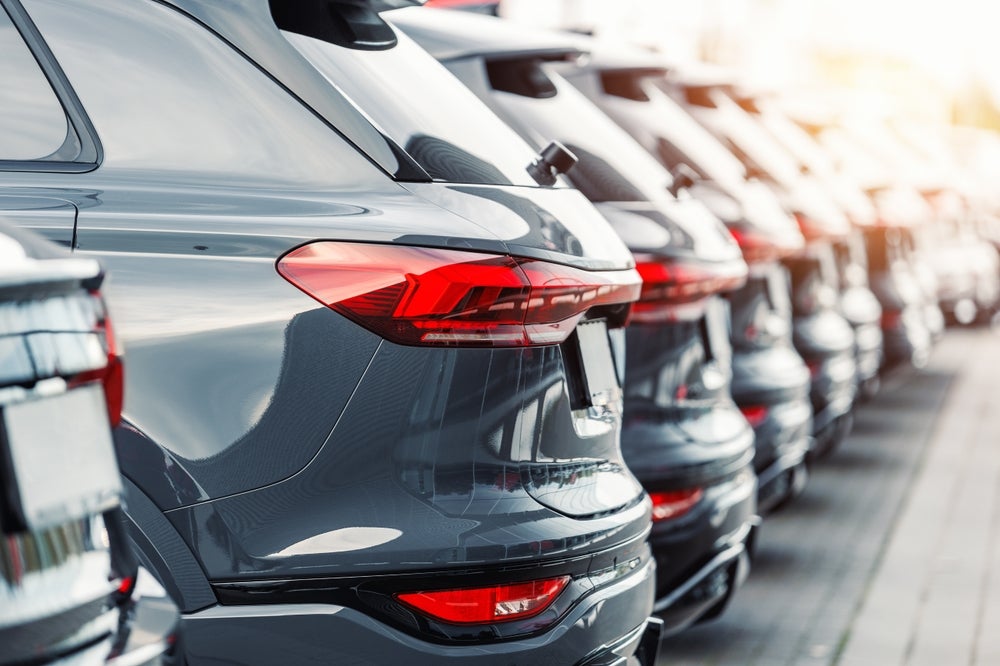
Whether it’s pandemics, the rolling financial crisis, Brexit, goods shortages or all-out war in Europe, the hardships of the last few years have given rise to a cost-of-living crisis, but how has this affected decision-making about car financing? Chris Farnell reports.
Following the uncertainty of Brexit, and the ongoing repercussions of the pandemic, among others, the automotive sector has been impacted by numerous global news stories in recent years, and things do not look like they are slowing down.
“While we thought things would be returning to some kind of normality by summer, with the developing situation in Ukraine, that is not likely,” said Chris Evans, head of sales at heycar in a statement this month.
“Just as small businesses thought Brexit was sorted, they dealt with Covid for two years, now that’s just getting sorted and we’re seeing the knock-on impact of Ukraine,” agrees a spokesperson for Aston Barclay. “They’ve had to be adaptable to changing circumstances.”
“The whole market is being impacted by a global shortage of semiconductors, creating delays for manufacturers on new cars, and that’s pushing up the prices of second-hand vehicles because there’s less supply on new cars,” says Paul Gilshan, CEO of car rental service, Tusker. “The crisis in Ukraine exacerbated that because manufacturers’ lead times are extended where parts are manufactured in Ukraine, with some manufacturers affected more than others.”
Energy upheavals
Of course, one impact of the Russian invasion of Ukraine is that it has exacerbated the already fraught energy market, with fuel prices already above £1.50 a litre and likely to increase even more.

US Tariffs are shifting - will you react or anticipate?
Don’t let policy changes catch you off guard. Stay proactive with real-time data and expert analysis.
By GlobalData“Recent figures, ahead of the Chancellor’s 5p a litre reduction on fuel duty, saw UK motorists paying £1.79 a litre for diesel and £1.64 for unleaded petrol,” says John Hughes, managing director of Mann Island Finance. “At the pandemic’s start, costs were hovering around £1 a litre. It is a significant change and, as with other costs of living, rises are having an impact on buying habits and consumer confidence, which ‘nosedived’ in March.”
That spike in fuel costs is accompanied by a major cost of living crisis across the UK, which some are comparing to the darkest days of the seventies.
“The nearest similarities are the energy crises of 1973 and 1979, which very largely saw the end of large engine ‘gas-guzzling’ cars as people could not afford to fill them,” says Alistair Jeff, commercial director of REALtime communications.
The difference is that today, the UK is far more reliant on cars for travel and there are significantly more cars on today’s roads. In 1973 the car pool was a little over 19 million vehicles; today, that has grown to around 37 million.
So, the question is, in a time when unprecedented current events seem to happen rapidly one after the other, how much are these events affecting consumer choices?
“Both crises heralded and accelerated a switch to more economical vehicles,” Jeff says. “The impact of the record fuel price levels experienced over recent weeks parallels the events in the 1970s. People are seeking ways of reducing their motoring costs.”
Fuel prices
Indeed, the sharp rise in fuel prices has seen an equally sharp response from business and private consumers. According to Aston Barclay’s latest desirability index, in March smaller vans became the go-to used LCV, the first time it has seen this happen. Six out of the top 15 LCVs in the index were smaller panel vans, as operators searched for more efficient models as fuel prices continued to rise.
The top five vans in the March index were the Mercedes Vito, the VW Transporter and Crafter and the Ford Transit Custom and Transit Courier.
“Since fuel prices have dramatically risen, we have started to see the market shift towards smaller vans that are the most cost-effective to run,” explained Geoff Flood, Aston Barclay’s national LCV sales manager.
Small businesses are often the vanguard of big shifts in the market, thanks to their ability to respond more quickly.
“If you’re an SME you’re very reactive. You don’t need to go to the board, you can make the decision there and then,” an Aston Barclay spokesperson adds.
Electric vehicles are continuing to enjoy a sustained boost, with EV leads on heycar up by 58 per cent in February 2022, compared to February 2021, but fuel costs have supercharged that. Select Car Leasing has reported a 59% increase in interest for electric vehicles in the space of one week as a result of record-high petrol prices.
Searches were also up 200% per cent compared to the same week last year, while search interest on Google Trends rose as much as 334%. “The UK has seen ongoing issues with fuel over the last year, with the autumn fuel shortage and now record-breaking fuel prices,” said David Lewis, electric lead at Select Car.
The EV market, fortunately, has reached a point where it is able to meet the sudden, growing demand.
“Now the stars are aligning, we have the best choice of EVs available, and consumers are getting to grips with the overall better affordability, particularly with the recent surge in petrol costs,” says Gilshan. “There have been many huge barriers to driving electric since introduced, but those barriers are being knocked down.”
“As with increases in utility costs that have seen customers told they will need to wait for an entire year for solar panels to be fitted, people are looking at the options of full-electric and hybrid vehicles,” Hughes says. “One of my colleagues has switched from diesel to full EV. Using Zap Maps journey cost calculator, he is saving £13 every day he commutes the 70-mile journey to and from work. Based upon 180 commuting days a year, that is £2,340 saved, excluding any road fund licence or clear air zone charge savings.”
It also means drivers are looking carefully at how they pay for their vehicles.
“With the focus on the cost of living at the moment, people are looking at the cheapest option to run a car and that’s putting electric products to the forefront,” adds Gilshan. “They’re looking at the overall cost, not just the leasing costs. They want to know how it runs, the cost of fuelling it. That’s one of the benefits of leasing, all of those costs, apart from the electricity to charge the car, are included in one price.”
While current affairs have driven many consumers to look for new, more economical vehicles, still others are looking at how to get more value from their existing motor.
“While drivers may consider servicing an expense, fresh oil, new spark plugs and filters can increase efficiency,” says Jeff. “Add to this cleaning the fuel system and checking the right tyres are on each corner and correctly inflated; they account for circa 20% of fuel consumption, and the net result is an immediate reduction in cost-per-mile. People may want to switch to an EV, but many can make savings now by getting their current car running more efficiently in the short term.”
Adaptability value
As we said at the start of this article, this is hardly the first big news development to hit the automotive sector, even recently, and whenever something of this magnitude happens, the winners are always the firms that can adapt most quickly.
The initial reaction to Brexit was that small companies put a stop to many operations until they knew what was going to happen, causing a dip in the used van market. With Covid, nobody knew what would happen so there was a short-term reaction to that, which recovered when trades, in particular, food distribution and construction, began getting busier.
“Businesses need to be adaptable, which we know for some bigger financial institutions that’s not something they’re used to,” an Aston Barclay spokesperson says. “Going forward adaptability and reacting to the market is going to be really key to ensure they keep growing and can react to demand. Obviously, with some of these smaller, more nimble finance houses, the reporting structure isn’t as big and they’re there to disrupt the market. But that will also increase the adaptability of the whole market, so that’s got to be a good thing for someone looking to take out motor finance during these exceptional circumstances.”
Supply chain shortages continue to constrain markets







